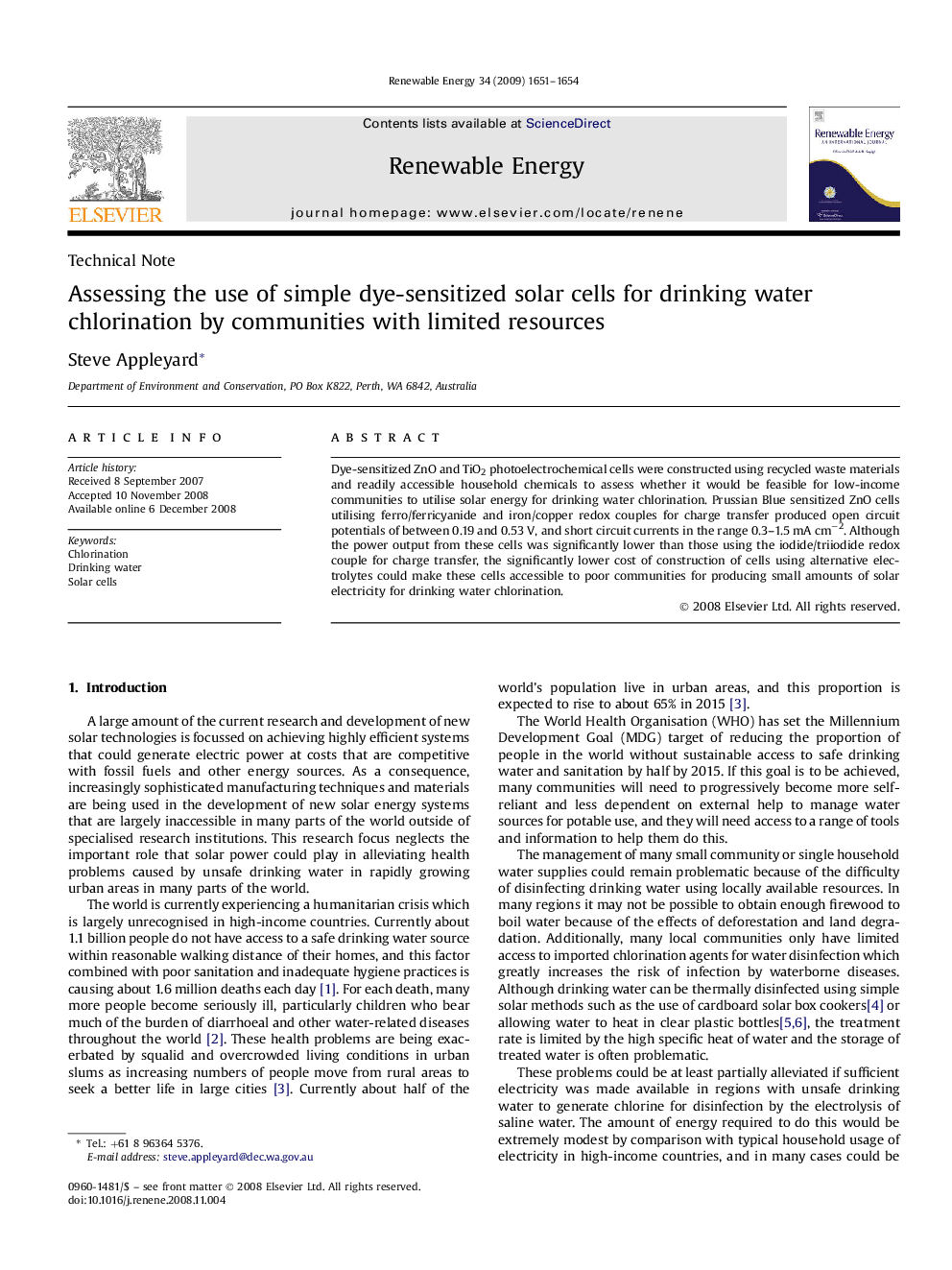| Article ID | Journal | Published Year | Pages | File Type |
|---|---|---|---|---|
| 302075 | Renewable Energy | 2009 | 4 Pages |
Dye-sensitized ZnO and TiO2 photoelectrochemical cells were constructed using recycled waste materials and readily accessible household chemicals to assess whether it would be feasible for low-income communities to utilise solar energy for drinking water chlorination. Prussian Blue sensitized ZnO cells utilising ferro/ferricyanide and iron/copper redox couples for charge transfer produced open circuit potentials of between 0.19 and 0.53 V, and short circuit currents in the range 0.3–1.5 mA cm−2. Although the power output from these cells was significantly lower than those using the iodide/triiodide redox couple for charge transfer, the significantly lower cost of construction of cells using alternative electrolytes could make these cells accessible to poor communities for producing small amounts of solar electricity for drinking water chlorination.
